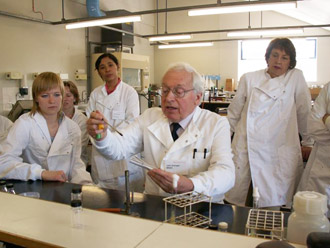| Topics in Safety (ASE 2018)1 is an authoritative reference for schools and colleges. It consists of essays on safety-related issues arranged in individual topics that serve as recommendations based on the best advice available at the time of publication.
'Safety guidelines' and 'Suitable and unsuitable microorganisms' that can be accessed below, are reproduced with permission from Topic 15 'Microbiology'. 'Risk assessment' is a modified version of guidance that was included in the second edition of Topics in Safety.
The original Topics in Safety was produced following a safety conference of experts, including representatives of MiSAC, convened by ASE in 1997. The 4th edition of Topic 15 is a much-revised updated version of the equivalent section in Safety in Science Education (DfEE 1996)2. The 4th edition of Topics in Safety is currently only available online to ASE members.
1
Safety guidelines (PDF)
Suitable and unsuitable microorganisms (PDF)
Risk assessment (PDF)
1 Topics in Safety 4th ed., 2018. Hatfield: Association for Science Education.
2 Safety in Science Education, 1996. London: HMSO. |
|

MiSAC Chairman John Grainger demonstrating aseptic technique
|
The Microbiology Society has sponsored a series of instructional videos which illustrate the recommended practice for carrying out various microbiological procedures which are required to prepare for safe and healthy practical work with microbes in school science. There are 16 videos, plus one with a full play list, which can be viewed on the YouTube web site. In order to display only these videos on YouTube, search with the phrase "Microbiology Society microbiological techniques and methods". You may need to scroll down to find the desired video.
- Using antibiotic discs
- Sterilising forceps
- Testing antimicrobials
- Preparing a spreader for autoclaving
- Producing a pour plate
- Serial dilution
- Sterilising glass pipettes
- Subculturing
- Surface and disinfectant preparation
- Flaming a loop
- Gram staining
- Microscopy
- Transferring agar to a Petri dish
- Using a pipette and spreader
- Making a streak plate
- Using a sterile inoculation loop
|
